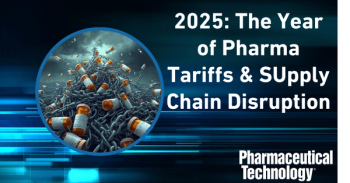
Navigating a Material Supplier Change
Contract organizations offer assistance when managing changes to material suppliers during a product’s lifecycle.
Having the correct materials for the formulation and manufacture of drug products is crucial. But what happens if a supplier can no longer provide the needed product? Changing a supplier mid-development or mid-production can be tricky. Contract development and manufacturing organizations (CDMOs) and contract manufacturing organizations (CMOs) can assist sponsor companies with this difficult task.
“Changing suppliers mid-cycle can affect various aspects such as chemistry, equipment, scale, testing methods, and other analytical controls and specifications, potentially impacting the quality of material made by different suppliers,” says Joshua Hoerner, general manager and executive vice president, Purisys (part of the Noramco Group).
When a product is already in production, making changes such as a new supplier or a raw material requires attention to regulations and quality considerations. “Depending on where you are at in a process, changing anything can have a deep impact, so it is important to take proper steps,” says Iain McGhee, vice-president of Quality at Ascend Advanced Therapies. “And, of course, materials should only be changed when necessary and with full agreement of the sponsor.”
Before making a switch
Sundar Narsimhan, chief procurement officer at Neuland Labs, stresses that a careful review of the following important factors should be done before switching material suppliers:
- Regulatory filing requirements. “It is possible that in some markets, sponsors must test, validate, and ensure stability before incorporating the supplier’s material into their supplies. Other markets follow a ‘do and tell’ regime, where, if the synthesis route remains unchanged, the material can be utilized with minimal additional testing,” says Narsimhan.
- Capability of new supplier to meet requirements. “Their relationship/control over the upstream supply chain, risk, and likelihood of non-supply must be verified,” says Narsimhan. “This is paramount since any supply disruption or quality incident can derail and sabotage the market performance of their product and can prove very costly.”
- Equivalence of new vendor’s supplies. “Any new changes or variations, for example, in the impurity profile or stability of the drug product can be disruptive and should be avoided at all costs,” says Narsimhan.
Jonathan Rush, head of Supply Chain at Andelyn, stresses that comparability should be considered first when switching from one supplier to another. He also points to the importance of organization alignment between a company’s analytical and quality groups. “Our analytical development group is continually evaluating the latest testing and technologies in our space,” Rush says.
Regulatory and quality considerations
Regulatory and compendial compliance requirements need to be followed, according to Rush. “For example, if material is tested according to USP [US Pharmacopeia] but the client requires [European Pharmacopoeia compliance], even though they are harmonized, certain differences still arise. So, it’s important to manage the specification to the most stringent guideline among the various guidelines to ensure the highest level of qualification,” says Rush.
To ensure compliance with regulations when changing suppliers mid-lifecycle, Mayank Nagar, vice-president and head–Tech Services & New Product Launches, North Americas, Dr. Reddy’s Laboratories, and Himanshu Joshi, director, New Product Launches, North Americas, Dr. Reddy’s Laboratories, suggest evaluating a new supplier’s quality management systems. They also say comprehensive risk assessments should be performed. “Maintain clear communication with regulatory authorities and stakeholders throughout the transition. Implement a robust change control process to manage the switch seamlessly and mitigate risks associated with the supplier change,” Nagar and Joshi say.
“These [supplier] changes may have regulatory implications, especially if the product is commercially filed, as products are expected to remain equivalent or at least comparable between the old and new suppliers, if in the middle of a product’s lifecycle,” says Hoerner.
When it comes to material specification issues to consider when switching suppliers, McGhee says specification limits need to be maintained so performance is consistent. He also suggests that manufacturers determine if a change in supplier will result in changes to the manufacturing and in-process controls and how the materials will be handled.
Quality control includes determining validation ranges for release tests. McGhee suggests asking if validated in-process controls and release tests are comparable to the original material. Shelf life and stability studies parameters may also need to be validated, according to McGhee, as well as impurity profiles.
“When changing material suppliers during production, it's crucial to consider the validation status of the process. Ensure the new supplier's quality program is robust, reliable, and has a strong performance record. Conduct a thorough re-qualification of the new material to confirm it meets the original material's quality parameters and all necessary documentation requirements,” says Kim Arsenault, quality compliance manager at BIOVECTRA. “This ensures continuity in product quality and compliance with regulatory standards, minimizing risks associated with supplier changes.”
“Validate the consistency and compatibility of the new materials with existing processes through rigorous testing. Assess potential impacts on product efficacy, safety, and stability, and update all relevant documentation,” say Nagar and Joshi.
Manufacturing considerations
Packaging and transportation of the product should also be considered. “Is the product packaging the same or do additional studies (e.g., leachable/extractible tests) need to be performed? Where is the new facility located, will this involve longer and more complex transportation routes? Are there security risks with the route?” McGhee asks.
“There are often upfront costs associated with setting up a new supplier, including process and analytical technology transfer expenses,” adds Hoerner. “Lastly, changing suppliers can impact the continuity of supply. It is essential to consider the new supplier’s project management capabilities and the experience of its project managers in implementing new products on time and within budget,” he concludes.
About the author
Susan Haigney is lead editor for Pharmaceutical Technology®.
Newsletter
Get the essential updates shaping the future of pharma manufacturing and compliance—subscribe today to Pharmaceutical Technology and never miss a breakthrough.




